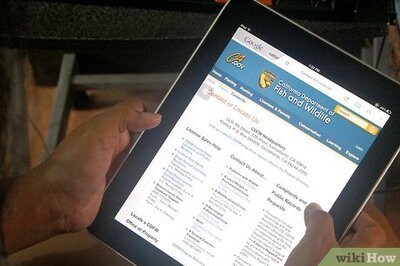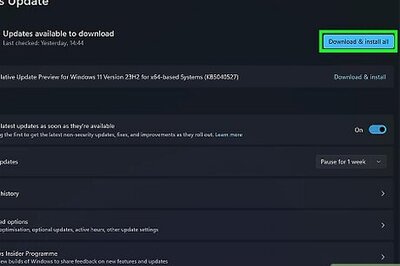
views
MELBOURNE: The Australian government is expected to announce on Friday an increase in the number of citizens able to return home, while one state said it would partially reopen its borders given a general downward coronavirus infection trend.
Prime Minister Scott Morrison is seeking to raise the cap on the number of people allowed into Australia each week by 2,000 from next Friday, after a National Cabinet meeting later in the day where states will be asked to boost quarantine capacity.
The country’s weekly limit is currently set at 4,000 people but there are an estimated 25,000 stranded Australians wanting to return home which the government has pledged to facilitate before Christmas.
Australia closed its international borders early in the coronavirus pandemic, and imposed strict lockdowns and social distancing measures, dramatically reducing the spread of coronavirus.
Australia has reported more than 26,800 coronavirus cases and 829 deaths, well below the infection and death rates of other developed countries.
The bulk of its infections have been in the hotspot state of Victoria, were new infections have been falling for weeks.
As the country’s number of infections slow, Queensland state said that it would open up its border to residents of the capital city of Canberra, which has had no new infections in 10 weeks, as it looks to encourage domestic tourism.
Queensland has not registered any local infections in eight days, its deputy premier Steven Miles said.
“Now for people from Canberra, Queensland is good to come. Now is the time and we urge them to start thinking to come up to Queensland for a holiday.”
Victoria logged 45 fresh cases overnight and five deaths, the highest number of new cases in more than a week, following 28 new cases on Thursday which was the lowest in three months.
Victoria’s rolling two-week average of new infections has been coming down, raising hopes that strict lockdown measures confining residents to their homes may be eased before the Oct. 26 deadline.
Average cases over the last two weeks in Melbourne, the state’s largest city, fell below 50 this week, the benchmark the state set to start easing curbs.
Disclaimer: This post has been auto-published from an agency feed without any modifications to the text and has not been reviewed by an editor



















Comments
0 comment